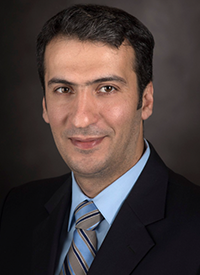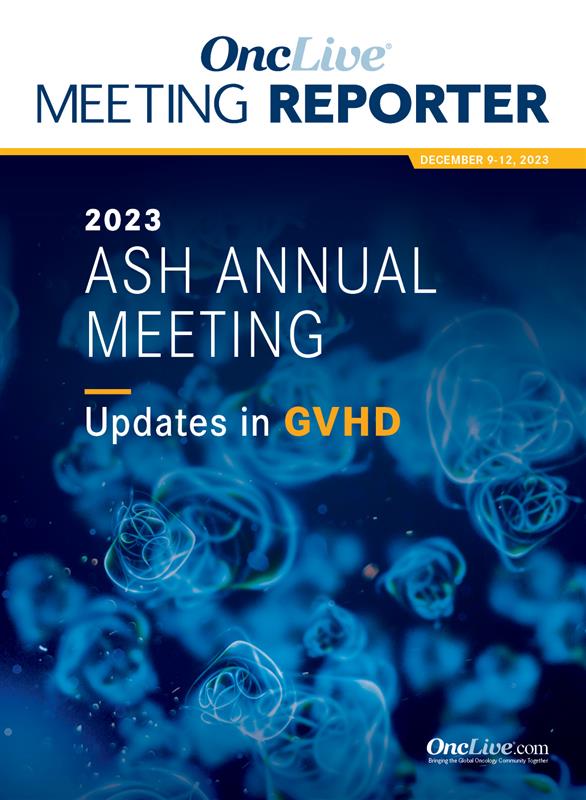News
Article
Orca-Q Showcases Early Efficacy, Acceptable Safety in Haploidentical Stem Cell Transplant Without PTCy
Author(s):
The high-precision cellular product Orca-Q demonstrated early signals of clinical activity as well as an acceptable safety profile for patients undergoing haploidentical stem cell transplantation without posttransplant cyclophosphamide.
Samer A. Srour, MB ChB, MS

The high-precision cellular product Orca-Q demonstrated early signals of clinical activity as well as an acceptable safety profile for patients undergoing haploidentical stem cell transplantation (haplo-SCT) without posttransplant cyclophosphamide (PTCy), according to findings from a phase 1 trial (NCT03802695) presented during the 2023 ASH Annual Meeting.1
Results showed that both the graft-vs-host disease (GVHD) relapse-free survival (GRFS) rate and overall survival (OS) rate at 1 year was 82% (95% CI, 65%-94%) with Orca-Q. This is in comparison to historical data with conventional PTCy for haplo-SCT, with recent 1-year GRFS rates of 46%.
“These findings show promising safety and efficacy outcomes using Orca-Q cell therapy for haploidentical transplant,” said Samer A. Srour, MB ChB, MS, lead study author and assistant professor in the Department of Stem Cell Transplantation, Division of Cancer Medicine, The University of Texas MD Anderson Cancer Center in Houston, in an oral presentation during the meeting. “No safety signals in this haploidentical setting were identified.”
Standard allogeneic SCT can be a curative approach for patients across many high-risk hematologic cancers, although access to this therapy was previously limited to those who have a fully matched donor. The introduction of PTCy as prophylaxis for GVHD increased the utility of haploidentical donors; however, it has also increased relapse rates and toxicity issues such as cytokine release syndrome (CRS), delayed engraftment and T-cell reconstitution, mucositis, infections, cardiac events, and non-relapse mortality, Srour added.
However, GRFS rates in this patient population remain low. Through allograft optimization, Orca-Q improves haplo-SCT with its fully defined stem and immune cells, which consist of hematopoietic stem and progenitor cells, invariant natural killer cells, regulatory T cells, and CD4+/CD8+ T-cell subsets.
Orca-Q is derived from granulocyte colony stimulating factor that is mobilized during peripheral blood apheresis and is manufactured centrally at a Current Good Manufacturing Practice Manufacturing Facility in Sacramento, California. Its administration involves a vein-to-vein time of less than 72 hours across the United States, Srour noted, adding that the vein-to-vein time was within 60 hours for most cases on the study.
The multicenter, dose-expansion trial enrolled patients aged 18 to 65 years with the following high-risk hematologic cancers: acute myeloid leukemia (AML), acute lymphoblastic leukemia (ALL), very high– or high-risk myelodysplastic syndrome, or myelofibrosis. Patients were required to be undergoing a haplo-SCT with negative donor-specific antibodies and were eligible for myeloablative chemotherapy with a Hematopoietic Cell Transplantation-specific Comorbidity Index 4 or lower, a Karnofsky performance score of at least 70, and adequate organ function.
Orca-Q’s regimen begins with myeloablative conditioning on days -10 to -2, followed only by single-agent tacrolimus on day -1—no PTCy or additional immunosuppressive therapies are administered. A fresh Orca-Q infusion is given on day 0, and tacrolimus is tapered on day +60 (posttransplant).
The study’s primary end points are dose-limiting toxicities and primary graft failure.
Off the 33 patients enrolled onto the study, the median age is 43 years (range, 21-63) and 27% of patients were female; a total 30.3% of patients identified as Hispanic or Latino. Patients were Asian (15.2%), Black or African American (21.2%), White (42.4%), or other (21.2%). Their primary disease was ALL (30.3%), AML (63.3%), or chronic myeloid leukemia (6.1%). Additionally, patients had high-/very high–risk disease (18%), intermediate-risk disease (79%). Disease risk index was not applicable for 3% of patients.
Patients’ disease status at time of transplant encompassed those who achieved their first complete remission (CR1; 73%), second CR (CR2; 24%) and CML accel phase (3%). Patients either had a total body irradiation (TBI)-based conditioning regimen (51.5%) or busulfan-based one (48.5%). Donor characteristics showed that there were more male donors (73%) vs female donors (27%), and the CMV status was positive (30.3%), negative/not detected (36.3%), or not available (33.3%).
Rapid engraftment with Orca-Q was observed in the patients. The median engraftment time with neutrophils was 12.0 days (range, 8-25) and 15.5 days with platelets (range, 8-79). Two patients experienced secondary graft failure, and grade 1/2 CRS occurred in 3 patients (grade 1, n = 2; grade 2, n = 1).
Additional data showed a low incidence of severe Common Terminology Criteria for Adverse Events grade 2 (CTCAE; n = 9) and CTCAE grade ≥3 (n = 15) infections. There were 5 events (15%) of acute grade 2 to 4 GVHD and 1 event of grade 3 acute GVHD. At a median follow-up of 375 days (range, 73-1384), no patients have developed moderate to severe chronic GVHD. This in comparison to historical cohorts with PTCy, which show 1-year chronic GVHD rates of 24% to 33%.2
The phase 1 trial is continuing to enroll patients across the United States. Srour stated that there are plans to increase the age criteria to 75 years and provide less-intensive conditioning therapy.
Editor’s Note: Dr Srour disclosed research funding from Orca Bio for this study.
References
- Srour SA, Salhotra A, Lowsky R, et al. Safety and efficacy of Orca-Q with haploidentical donors for the treatment of advanced hematologic malignancies without the use of post-transplant cyclophosphamide. Blood. 2023;142(suppl 1):773. doi:10.1182/blood-2023-189534
- Jagasia MH, Grinix HT, Arora M, et al. National institutes of health consensus development project on criteria for clinical trials in chronic graft-versus-host disease: I. The 2014 Diagnosis and Staging Working Group report. Biol Blood Marrow Transplant. 2015;21(3):389-401.e1. doi:10.1016/j.bbmt.2014.12.001









